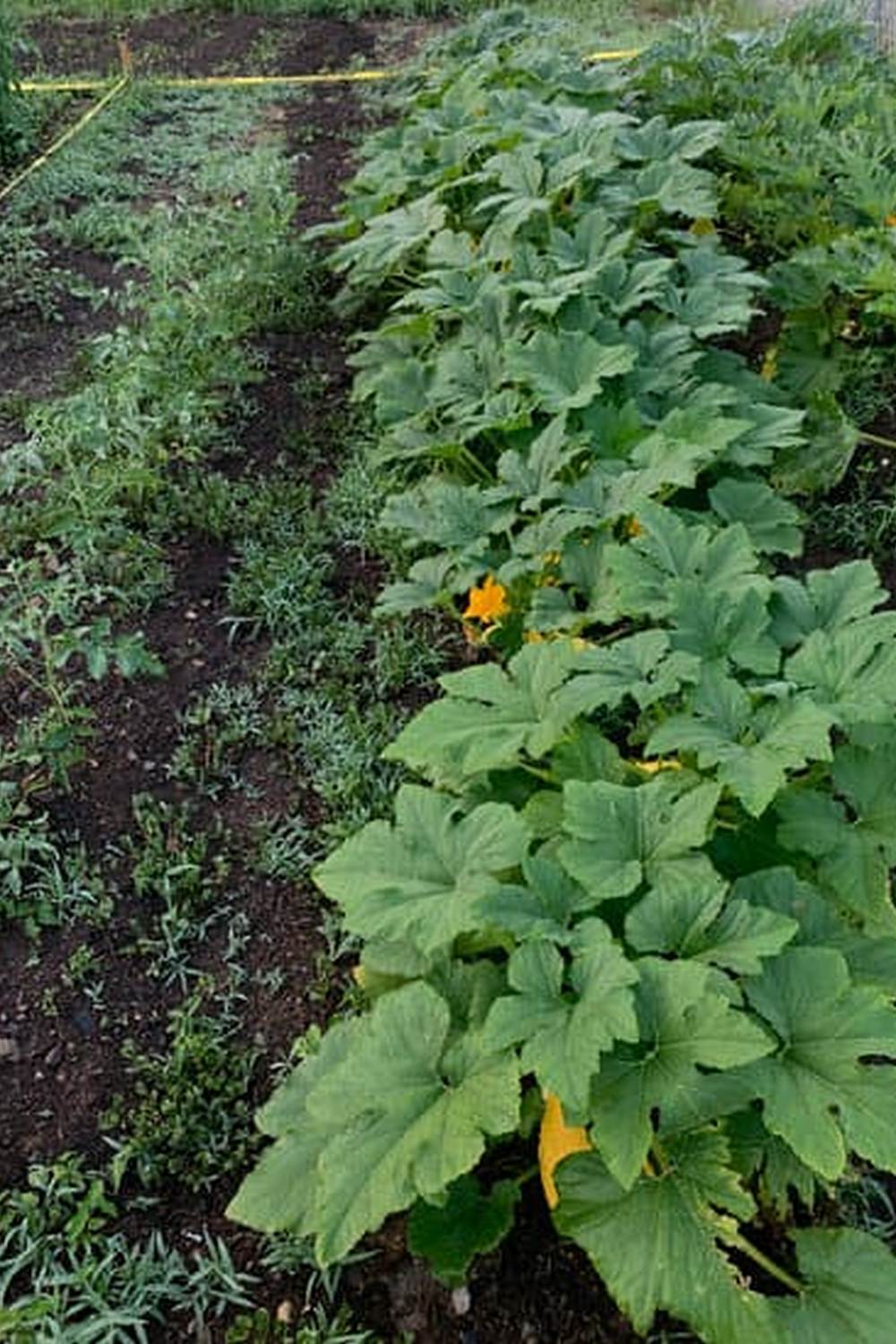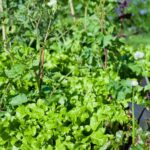Are you looking for the best covering for your vegetable garden? Look no further. In this article, we will explore the various options available and help you understand the importance of using covering for vegetable gardens. From organic to synthetic options, we will discuss the benefits of using coverings and provide tips on how to choose the best one for your specific garden.
Covering your vegetable garden is crucial for protecting your plants from harsh weather conditions, pests, and diseases. It also helps retain moisture in the soil and prevent weed growth. Whether you are a seasoned gardener or just starting out, understanding the significance of using covering for vegetable gardens is essential in maintaining a healthy and thriving garden.
In the following sections, we will delve into the benefits of using covering for vegetable gardens, explore different types of organic and synthetic options, provide guidance on choosing the best covering for your specific garden, and offer tips for maintaining and replacing coverings. Additionally, we will include case studies of successful vegetable gardens with different types of coverings to showcase real-life examples of their effectiveness.
Get ready to learn everything you need to know about finding the best covering for your vegetable garden.
Benefits of Using Covering for Vegetable Gardens
Using a covering for your vegetable garden offers a wide range of benefits that can help improve the health and productivity of your plants. Some of the key advantages of using covering for vegetable gardens include:
1. Pest and Weed Control: By placing a covering over your vegetable garden, you can protect your plants from pests such as insects, birds, and small animals that may damage or eat your crops. Additionally, covering can also help suppress weed growth, reducing the need for manual weeding and providing a cleaner growing environment for your vegetables.
2. Temperature Regulation: Coverings can help regulate the temperature of the soil, providing insulation during colder months and shading during hotter months. This can create an optimal growing environment for your vegetables and help extend the growing season.
3. Moisture Retention: Coverings can assist in retaining moisture in the soil by reducing evaporation, which is especially beneficial during dry periods or in regions with limited rainfall. This can help reduce the need for frequent watering and ensure consistent soil moisture for healthy plant growth.
In addition to these benefits, using coverings for vegetable gardens can also enhance crop quality, protect against extreme weather conditions, and promote overall sustainability in gardening practices. By understanding these advantages, you can make an informed decision on the best covering option for your specific vegetable garden needs.
- Organic mulches
- Straw or hay
- Grass clippings
Considering using coverings made from organic materials is important as they offer great advantages when it comes to environmental impact and long-term benefits.
It’s important to recognize that choosing the best covering for your vegetable garden will depend on various factors including climate, soil type, specific pests or diseases present in your area, and personal gardening preferences. By carefully considering these factors, you can select a suitable covering that will optimize the health and productivity of your vegetable garden.
Types of Coverings for Vegetable Gardens
When it comes to protecting and nurturing your vegetable garden, choosing the right covering is essential. Organic options for covering vegetable gardens offer a range of benefits that can help improve soil health, protect plants from pests, and maintain optimal growing conditions. In this section, we will explore some of the best organic coverings for vegetable gardens and how they can benefit your plants.
One of the most popular organic coverings for vegetable gardens is mulch. Mulch not only helps to retain moisture in the soil, but it also suppresses weeds and adds organic matter as it breaks down. Organic mulches such as straw, shredded leaves, or grass clippings can be used to provide a protective layer over the soil while also improving its fertility.
Another organic covering option for vegetable gardens is row covers. These lightweight, breathable fabrics create a physical barrier between plants and pests while still allowing air, water, and light to reach the plants. Row covers are particularly effective at protecting crops from insect damage and can be used to extend the growing season by providing insulation against cool temperatures.
Compost is also considered an effective organic covering for vegetable gardens. By adding a layer of compost to your garden beds, you can improve soil structure, fertility, and microbial activity while also suppressing diseases and pests. Compost can be used as a top dressing or mixed into the soil to provide essential nutrients for healthy plant growth.
Overall, choosing organic coverings for your vegetable garden not only benefits your plants but also promotes sustainable gardening practices that support environmental health. By considering these organic options, you can select the best covering for your specific vegetable garden needs.
Types of Coverings for Vegetable Gardens
When it comes to choosing the best covering for your vegetable garden, synthetic options can offer a range of benefits. Here are some popular synthetic coverings that you may want to consider for your vegetable garden:
1. Plastic Mulch: Plastic mulch is a synthetic covering that helps to retain soil moisture, control weeds, and regulate soil temperature. It is available in various colors, with black being the most common choice for vegetable gardens as it can help to warm the soil and promote early plant growth.
2. Landscape Fabric: Landscape fabric, also known as weed barrier fabric, is a synthetic covering made from woven or non-woven materials. It is an effective option for controlling weeds in vegetable gardens while still allowing water and air to penetrate the soil.
3. Shade Cloth: Shade cloth is a synthetic covering that provides protection from the sun’s intense heat and UV rays. It can be particularly beneficial for delicate vegetables that are sensitive to extreme temperatures.
4. Row Covers: Row covers are synthetic coverings made from lightweight fabrics such as spun-bonded polyester or polypropylene. They are designed to protect plants from pests, harsh weather conditions, and temperature fluctuations.
When choosing the best synthetic covering for your specific vegetable garden, consider factors such as your local climate, the types of vegetables you are growing, and your maintenance preferences. Each type of synthetic covering has its own unique advantages and considerations, so it’s important to select one that suits your garden’s needs.
By understanding the benefits and characteristics of different synthetic coverings for vegetable gardens, you can make an informed decision on which option will work best for your specific growing environment.
How to Choose the Best Covering for Your Specific Vegetable Garden
Choosing the best covering for your specific vegetable garden is crucial for the success of your crops. There are several factors to consider when making this decision, including the climate in your area, the type of vegetables you are growing, and your personal gardening style.
First, consider the climate in your region. If you live in an area with harsh winters or frequent heavy rain, you may need a more durable and weather-resistant covering for your vegetable garden. Conversely, if you live in a hot and sunny climate, you’ll want a covering that provides shade and helps retain moisture.
Next, think about the type of vegetables you will be growing. Some plants prefer more sunlight, while others thrive in shaded environments. Make sure to choose a covering that allows the right amount of light to filter through for your specific crops.
Consider your own gardening style as well. If you prefer low-maintenance gardening, you may want to opt for a long-lasting synthetic covering that requires minimal upkeep. On the other hand, if you enjoy a more hands-on approach to gardening, an organic covering such as straw or mulch may be the best choice for you.
When it comes to choosing the best covering for your vegetable garden, there is no one-size-fits-all solution. It’s important to consider all these factors and select a covering that will provide the best possible environment for your specific vegetables to thrive.
| Factor | Consideration |
|---|---|
| Climate | Harsh winters or heavy rain may require durable coverings |
| Type of Vegetables | Choose coverings that allow appropriate light levels for specific crops |
| Gardening Style | Select coverings based on desired maintenance level and personal preference |
Tips for Maintaining and Replacing Coverings for Vegetable Gardens
Maintaining and replacing coverings for vegetable gardens is essential to ensure the continued health and productivity of your plants. Proper upkeep of the covering material can help protect your vegetables from pests, diseases, and adverse weather conditions.
Regular Cleaning and Inspections
Regularly cleaning and inspecting your covering material is crucial for identifying any tears, holes, or wear and tear. Remove any debris, such as leaves or branches, that may be accumulating on top of the covering. This will prevent blockage of sunlight and airflow, which are essential for the growth of your vegetables.
Replacing Worn-Out Coverings
When you notice signs of deterioration in your covering material, such as fading color or thinning fabric, it’s time to consider a replacement. Worn-out coverings may not provide adequate protection for your vegetables, allowing pests and diseases to infiltrate. Be proactive in replacing worn-out coverings to avoid potential damage to your garden.
Seasonal Maintenance
Consider seasonal maintenance for your coverings. In colder months, you may need to add an extra layer or switch to a thicker covering material to provide insulation for your vegetables. Similarly, in hotter months, a lighter and breathable covering material might be more suitable. Adjusting the covering based on seasonal needs can ensure the best possible environment for your vegetable garden.
By following these tips for maintaining and replacing coverings for vegetable gardens, you can prolong the life of your covering material and provide optimal protection for your vegetables. It’s important to prioritize regular maintenance and timely replacements to maximize the benefits of using
Case Studies
One successful vegetable garden that has benefitted from using organic mulch as a covering is the Johnson family garden. They have been using shredded leaves, straw, and grass clippings as a protective layer for their vegetable beds for several years. The organic mulch has helped to retain moisture in the soil, suppress weeds, and improve overall soil health. As a result, the Johnson family has been able to consistently yield bountiful crops of tomatoes, peppers, and cucumbers.
Case Study 2: Synthetic Plastic Covering
Another example of a successful vegetable garden with a different type of covering is the Patel community garden. The Patels have opted for synthetic plastic covering over their raised beds to create mini greenhouses for their vegetables. This method has extended their growing season, provided protection from pests and extreme weather, and resulted in higher yields of greens like lettuce and spinach throughout the year.
Case Study 3: Straw Covering
Lastly, the Smith urban garden has implemented straw as a covering for their vegetable beds. The use of straw mulch has not only improved water retention and reduced erosion but also enhanced the aesthetic appeal of their garden. The Smiths have found that straw covering helps to regulate soil temperature and provides an ideal environment for root development, leading to healthy crops of carrots, beets, and radishes.
By examining these case studies, it becomes evident that different types of coverings can have significant impacts on the success of vegetable gardens. Whether it’s organic mulch, synthetic plastic covering or straw mulch – each option can provide unique benefits based on specific gardening needs and preferences.
Conclusion
In conclusion, the top choice for the best covering for vegetable gardens ultimately depends on the specific needs and conditions of your garden. Organic options such as mulch, straw, or compost offer a natural and sustainable way to protect your vegetables from pests and harsh weather while also providing nutrients to the soil.
On the other hand, synthetic options like landscape fabric or plastic sheeting provide effective protection against weeds and moisture retention. Ultimately, the best covering for your vegetable garden will depend on factors such as climate, soil type, and personal preferences.
When choosing the best covering for your specific vegetable garden, it is important to consider not only the immediate benefits but also the long-term impact on soil health and plant growth. Understanding the unique needs of your garden will help in selecting a covering that enhances productivity and sustainability over time.
In addition, maintaining and replacing coverings for vegetable gardens is vital to ensure continued effectiveness. Regular inspection of coverings for wear and tear, proper installation techniques, and timely replacement when necessary can significantly impact the success of your vegetable garden. By thoroughly understanding the benefits of different types of coverings and implementing proper maintenance practices, you can create a thriving vegetable garden that yields healthy and abundant produce year after year.

If you’re looking to get into vegetable gardening, or are just looking for some tips on how to make your current garden better, then you’ve come to the right place! My name is Ethel and I have been gardening for years. In this blog, I’m going to share with you some of my best tips on how to create a successful vegetable garden.





